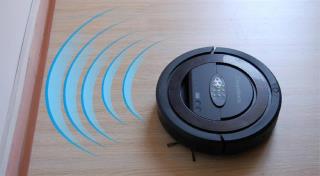Kaip įdiegti Thelia 2.3 Debian 9
Naudojate kitą sistemą? Thelia yra atvirojo kodo įrankis, skirtas kurti el. verslo svetaines ir valdyti PHP parašytą internetinį turinį. Thelia šaltinio kodas i
BlogoText TVS yra paprasta ir lengva, nemokama ir atviro kodo turinio valdymo sistema (TVS) ir minimalistinis tinklaraščio variklis. „BlogoText“ TVS funkcijos, įmontuotos RSS informacijos santraukose, nuorodų bendrinimas, vaizdų ir failų įkėlimas, JSON/ZIP/HTML importavimas ir eksportavimas, taip pat „Wordpress“ importavimas. „BlogoText“ idealiai tinka tinklaraščių autoriams ir kūrėjams, kurie mėgsta laikytis minimalistinio požiūrio į dienoraščius.
Šioje pamokoje mes įdiegsime BlogoText CMS Debian 9 LAMP VPS, naudodami Apache žiniatinklio serverį, PHP 7.1 ir MariaDB duomenų bazę.
Pradėsime pridėdami naują sudovartotoją.
Pirmiausia prisijunkite prie savo serverio kaip root:
ssh root@YOUR_VULTR_IP_ADDRESS
The sudo command isn't installed by default in the Vultr Debain 9 server instance, so we will first install sudo:
apt-get -y install sudo
Now add a new user called user1 (or your preferred username):
adduser user1
When prompted, enter a secure and memorable password. You will also be prompted for your "Full Name" and some other details, but you can simply leave them blank by pressing Enter.
Now check the /etc/sudoers file to make sure that the sudoers group is enabled:
visudo
Look for a section like this:
%sudo ALL=(ALL:ALL) ALL
This line tells us that users who are members of the sudo group can use the sudo command to gain root privileges. It will be uncommented by default so you can simply exit the file.
Next we need to add user1 to the sudo group:
usermod -aG sudo user1
We can verify the user1 group membership and check that the usermod command worked with the groups command:
groups user1
Now use the su command to switch to the new sudo user user1 account:
su - user1
The command prompt will update to indicate that you are now logged into the user1 account. You can verify this with the whoami command:
whoami
Now restart the sshd service so that you can login via ssh with the new non-root sudo user account you have just created:
sudo systemctl restart sshd
Exit the user1 account:
exit
Exit the root account (which will disconnect your ssh session):
exit
You can now ssh into the server instance from your local host using the new non-root sudo user user1 account:
ssh user1@YOUR_VULTR_IP_ADDRESS
If you want to execute sudo without having to type a password every time, then open the /etc/sudoers file again, using visudo:
sudo visudo
Edit the section for the sudo group so that it looks like this:
%sudo ALL=(ALL) NOPASSWD: ALL
Please note: Disabling the password requirement for the sudo user is not a recommended practice, but it is included here as it can make server configuration much more convenient and less frustrating, especially during longer systems administration sessions. If you are concerned about the security implications, you can always revert the configuration change to the original after you finish your administration tasks.
Whenever you want to log into the root user account from within the sudo user account, you can use one of the following commands:
sudo -i
sudo su -
You can exit the root account and return back to your sudo user account any time by simply typing the following:
exit
Before installing any packages on the Debian server instance, we will first update the system.
Make sure you are logged in to the server using a non-root sudo user and run the following commands:
sudo apt-get update
sudo apt-get -y upgrade
Install the Apache web server:
sudo apt-get -y install apache2
Then use the systemctl command to start and enable Apache to execute automatically at boot time:
sudo systemctl enable apache2
sudo systemctl start apache2
Check your Apache default site configuration file to ensure that the DocumentRoot directive points to the correct directory:
sudo vi /etc/apache2/sites-enabled/000-default.conf
The DocumentRoot configuration option will look like this:
DocumentRoot "/var/www/html"
Dabar turime įgalinti „ mod_rewriteApache“ modulį, kad įsitikintumėte, jog jūsų „Apache deafult“ svetainės konfigūracijos failas vis dar atidarytas, ir pridėkite šias „ DirectoryApache“ direktyvas prieš pat uždarymo </VirtualHost>žymą, kad jūsų konfigūracijos failo pabaiga atrodytų taip:
<Directory /var/www/html/>
Options Indexes FollowSymLinks MultiViews
AllowOverride All
Order allow,deny
allow from all
</Directory>
</VirtualHost>
Svarbiausia aukščiau parodyta direktyva yra AllowOverride All.
Dabar išsaugokite ir išeikite iš failo ir įjunkite „ mod_rewriteApache“ modulį:
sudo a2enmod rewrite
Šios pamokos pabaigoje iš naujo paleisime „Apache“, tačiau reguliariai iš naujo paleisti „Apache“ diegimo ir konfigūravimo metu tikrai yra geras įprotis, todėl padarykime tai dabar:
sudo systemctl restart apache2
Dabar galime įdiegti PHP 7.0 kartu su visais reikalingais PHP moduliais, reikalingais BlogoText TVS:
sudo apt-get -y install php php-gd php-mbstring php-common php-mysql php-imagick php-xml libapache2-mod-php php-curl php-tidy php-zip php-intl
Debian 9 defaults to using MariaDB database server, which is an enhanced, fully open source, community developed, drop-in replacement for MySQL server.
Install MariaDB database server:
sudo apt-get -y install mariadb-server
Start and enable MariaDB server to execute automatically at boot time:
sudo systemctl enable mariadb
sudo systemctl start mariadb
Secure your MariaDB server installation:
sudo mysql_secure_installation
The root password will be blank, so simply hit enter when prompted for the root password.
When prompted to create a MariaDB/MySQL root user, select "Y" (for yes) and then enter a secure root password. Simply answer "Y" to all of the other yes/no questions as the default suggestions are the most secure options.
Log into the MariaDB shell as the MariaDB root user by running the following command:
sudo mariadb -u root -p
Norėdami pasiekti MariaDB komandų eilutę, tiesiog įveskite MariaDB rootslaptažodį, kai būsite paraginti.
Vykdykite šias užklausas, kad sukurtumėte MariaDB duomenų bazę ir duomenų bazės naudotoją, skirtą „BlogoText“ TVS:
CREATE DATABASE blogo_db CHARACTER SET utf8 COLLATE utf8_general_ci;
CREATE USER 'blogo_user'@'localhost' IDENTIFIED BY 'UltraSecurePassword';
GRANT ALL PRIVILEGES ON blogo_db.* TO 'blogo_user'@'localhost';
FLUSH PRIVILEGES;
EXIT;
Jei norite, duomenų bazės pavadinimą blogo_dbir vartotojo vardą galite pakeisti blogo_userkažkuo, kas jums patinka. Taip pat įsitikinkite, kad „UltraSecurePassword“ pakeitėte tikrai saugiu slaptažodžiu.
Pakeiskite dabartinį darbo katalogą į numatytąjį žiniatinklio katalogą:
cd /var/www/html/
Jei gaunate klaidos pranešimą, kuriame sakoma kažkas panašaus, 'No such file or directory'išbandykite šią komandą:
cd /var/www/ ; sudo mkdir html ; cd html
Dabartinis jūsų darbo katalogas bus: /var/www/html/. Tai galite patikrinti naudodami pwdkomandą (spausdinti darbo katalogą):
pwd
Now use wget to download the BlogoText CMS installation package:
sudo wget https://github.com/BlogoText/blogotext/archive/3.7.6.zip
Please note: You should definitely check for the most recent version by visiting the BlogoText CMS download page.
List the current directory to check that you have successfully downloaded the file:
ls -la
Remove index.html:
sudo rm index.html
Let's quickly install unzip so we can unzip the file:
sudo apt-get -y install unzip
Now uncompress the zip archive:
sudo unzip 3.7.6.zip
Move all of the installation files to the web root directory:
sudo mv blogotext-3.7.6/* /var/www/html
Change ownership of the web files to avoid any permissions problems:
sudo chown -R www-data:www-data * ./
Restart Apache again:
sudo systemctl restart apache2
Now we're ready to move on to the final step.
It's time to visit the IP address of your server instance in your browser, or if you've already configured your Vultr DNS settings (and given it enough time to propagate) you can simply visit your domain instead.
To access the BlogoText CMS installation page, enter your Vultr instance IP address into your browser address bar, followed by /admin/install.php:
http://YOUR_VULTR_IP_ADDRESS/admin/install.php
Most of the installation options are self explanatory, but here are a few pointers to help you along:
Select your language and click on the OK button.
Enter the following Administrator and Site details:
Username: admin
Password: <admin password>
Blog’s URL: <your URL>
Click OK to continue.
Select MySQL as the DBMS and then enter the following database values:
MySQL User: blogo_user
MySQL Password: UltraSecurePassword
MySQL Database: blogo_db
MySQL Host: localhost
Click OK to continue.
You will be automatically redirected to the admin section so simply enter your username and password and click on the Connection button to log in. You can also enter the admin address manually by entering the following URL:
http://YOUR_VULTR_IP_ADDRESS/admin
For added security, you can change the name of your /admin/ folder:
sudo mv -i ./admin ./top_secret_name
You are now ready to start adding your content and configuring the look and feel of your site. Make sure you check out the BlogoText CMS wiki page for more information about how to build and configure your site.
Naudojate kitą sistemą? Thelia yra atvirojo kodo įrankis, skirtas kurti el. verslo svetaines ir valdyti PHP parašytą internetinį turinį. Thelia šaltinio kodas i
Naudojate kitą sistemą? „Microweber“ yra atvirojo kodo „drag and drop“ TVS ir internetinė parduotuvė. „Microweber“ šaltinio kodas yra „GitHub“. Šis vadovas jums parodys
Naudojate kitą sistemą? „Microweber“ yra atvirojo kodo „drag and drop“ TVS ir internetinė parduotuvė. „Microweber“ šaltinio kodas yra „GitHub“. Šis vadovas jums parodys
Naudojate kitą sistemą? DotCMS yra atvirojo kodo, įmonės lygio turinio valdymo sistema, parašyta Java. Jame yra beveik visos reikalingos funkcijos t
Naudojate kitą sistemą? Pagekit 1.0 TVS yra graži, modulinė, išplečiama ir lengva, nemokama ir atviro kodo turinio valdymo sistema (TVS) su
Naudojate kitą sistemą? BigTree CMS 4.2 yra greita ir lengva, nemokama ir atviro kodo, įmonės lygio turinio valdymo sistema (TVS), turinti platų
Naudojate kitą sistemą? Pagekit yra atvirojo kodo TVS, parašyta PHP. „Pagekit“ šaltinio kodas yra „GitHub“. Šis vadovas parodys, kaip įdiegti
Naudojate kitą sistemą? PyroCMS yra atvirojo kodo TVS, parašyta PHP. PyroCMS šaltinio kodas yra priglobtas GitHub. Šiame vadove gerai eikite per visą
Naudojate kitą sistemą? Subrion 4.1 TVS yra galinga ir lanksti atvirojo kodo turinio valdymo sistema (TVS), kuri suteikia intuityvų ir aiškų turinį
Naudojate kitą sistemą? Backdrop CMS 1.8.0 yra paprasta ir lanksti, mobiliesiems pritaikyta nemokama ir atvirojo kodo turinio valdymo sistema (TVS), kuri leidžia mums
Naudojate kitą sistemą? Įvadas Roadiz yra moderni TVS, skirta daugelio tipų paslaugoms tvarkyti. Remiantis Symfony komponentais ir doktrina ORM, t
Naudojate kitą sistemą? „Microweber“ yra atvirojo kodo „drag and drop“ TVS ir internetinė parduotuvė. „Microweber“ šaltinio kodas yra „GitHub“. Šis vadovas jums parodys
Naudojate kitą sistemą? Grav yra atvirojo kodo plokščių failų TVS, parašyta PHP. „Grav“ šaltinio kodas viešai priglobtas „GitHub“. Šis vadovas parodys, kaip t
Naudojate kitą sistemą? Grav yra atvirojo kodo plokščių failų TVS, parašyta PHP. „Grav“ šaltinio kodas viešai priglobtas „GitHub“. Šis vadovas parodys, kaip t
Naudojate kitą sistemą? Automad yra atvirojo kodo failais pagrįsta turinio valdymo sistema (TVS) ir šablonų variklis, parašytas PHP. „Automad“ šaltinio kodas i
„Raneto“ yra nemokama atvirojo kodo žinių bazė, sukurta naudojant Node.js, kurią lengva nustatyti ir naudoti, taip pat lengva administruoti. Kategorijos ir puslapiai ar
Naudojate kitą sistemą? Thelia yra atvirojo kodo įrankis, skirtas kurti el. verslo svetaines ir valdyti PHP parašytą internetinį turinį. Thelia šaltinio kodas i
Naudojate kitą sistemą? Spalio 1.0 TVS yra paprasta ir patikima, nemokama ir atviro kodo turinio valdymo sistema (TVS), sukurta remiantis Laravel sistema
Naudojate kitą sistemą? ImpressPages CMS 5.0 yra paprasta ir efektyvi, nemokama ir atviro kodo, patogi, MVC pagrįsta turinio valdymo sistema (TVS).
Naudojate kitą sistemą? CMS Made Simple 2.2 yra lanksti ir išplečiama, nemokama ir atvirojo kodo turinio valdymo sistema (TVS), sumaniai sukurta
Dirbtinis intelektas nėra ateityje, jis čia, dabartyje Šiame tinklaraštyje Skaitykite, kaip dirbtinio intelekto programos paveikė įvairius sektorius.
Ar taip pat esate DDOS atakų auka ir esate sumišęs dėl prevencijos metodų? Perskaitykite šį straipsnį, kad išspręstumėte savo užklausas.
Galbūt girdėjote, kad įsilaužėliai uždirba daug pinigų, bet ar kada susimąstėte, kaip jie uždirba tokius pinigus? padiskutuokime.
Ar norite pamatyti revoliucinius „Google“ išradimus ir kaip šie išradimai pakeitė kiekvieno žmogaus gyvenimą šiandien? Tada skaitykite tinklaraštį, kad pamatytumėte „Google“ išradimus.
Savavaledžių automobilių koncepcija, kuri išvažiuotų į kelius su dirbtinio intelekto pagalba, yra svajonė, kurią jau kurį laiką svajojame. Tačiau nepaisant kelių pažadų, jų niekur nematyti. Skaitykite šį tinklaraštį, kad sužinotumėte daugiau…
Kadangi mokslas sparčiai vystosi, perimdamas daug mūsų pastangų, taip pat didėja rizika, kad pateksime į nepaaiškinamą singuliarumą. Skaitykite, ką mums gali reikšti išskirtinumas.
Duomenų saugojimo metodai gali būti tobulinami nuo pat Duomenų gimimo. Šiame tinklaraštyje, remiantis infografika, aprašoma duomenų saugojimo raida.
Skaitykite tinklaraštį, kad paprasčiausiai sužinotumėte apie skirtingus didžiųjų duomenų architektūros sluoksnius ir jų funkcijas.
Šiame skaitmeniniu būdu pagrįstame pasaulyje išmanieji namų įrenginiai tapo svarbia gyvenimo dalimi. Štai keletas nuostabių išmaniųjų namų įrenginių privalumų, kaip jie daro mūsų gyvenimą vertą gyventi ir paprastesnį.
Neseniai „Apple“ išleido „macOS Catalina 10.15.4“ priedą, skirtą problemoms išspręsti, tačiau atrodo, kad dėl atnaujinimo kyla daugiau problemų, dėl kurių „Mac“ įrenginiai blokuojami. Norėdami sužinoti daugiau, perskaitykite šį straipsnį



